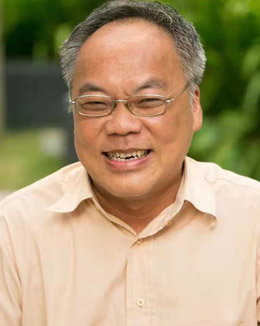Keynote Speakers
Prof. Eddie Yin-Kwee NG
Ph.D., FNAT [USA], AEUAS & AEASA [EU], FAIMBE & FASME [USA], FAIIA, FIETI & FAPTSA [HK], DFIDSAI [CN], FIET [UK], Nanyang Technological University, SingaporeSpeech Title:
Biography: Dr. Eddie obtained Ph.D. at Cambridge Univ. with a Cambridge Commonwealth Scholarship.
He is elected as:
• Fellow (inaugural) for National Academy of Technology (USA);
• Academician for European Academy of Sciences and Arts (EU-Austria);
• Academician for European Academy of Sciences (EU-Greece);
• Fellow (Life) of the American Society of Mechanical Engineers (USA);
• Fellow of Institute of Engineering and Technology (United Kingdom);
• Fellow of Industry Academy: International Artificial Intelligence Industry Alliance (HK),
• Fellow of International Engineering and Technology Institute (Hong Kong),
• Fellow of Asia-Pacific Technological Sciences Academy (Hong Kong),
• Distinguished Fellow for Institute of Data Science and Artificial Intelligence, (China), and,
• Fellow of the American Institute for Medical and Biological Engineering (USA) with his citation reads: "For outstanding contributions in non-contact, early detection of human-health abnormality non-invasively with infrared-physics-technology".
Eddie received 2022 Alumni Highly Commended Award from the VC of Newcastle University, UK for his contributions to the society and achievements as academia. Winner of the 2024 2nd IETI (International Engineering and Technology Institute) Ramesh Agarwal Lifetime Achievement Award in Science, Engineering or Technology. This award honors individuals with lifetime achievements in research, education, and service towards the advancement of any discipline of engineering and technology.
Since 1992, he works as Faculty in the School of Mechanical & Aerospace Engineering in Nanyang Technological University, Singapore. He is the: Lead Editor-in-Chief for the ISI Journal of Mechanics in Medicine and Biology for dissemination of original research in all fields of mechanics in medicine and biology since 2000; & Lead Editor-in-Chief for the ISI Journal of IET - AI in Surgery for dissemination of original research in integrating of artificial intelligence, surgery, and biomedical engineering, since 2024; https://www.worldscientific.com/page/iet/ai-surgery
He is included in the Stanford list of the World’s top 2% Scientists since 2019 (ranked <80 out of 64,425 as 0.001% in the field of Biomedical Engineering). The ranking method is calculated by removing the self-citation of the literature. His Google Scholar (h-index: 73+) can be found in: [http://scholar.google.com.sg/citations?user=9QW1LYAAAAAJ].
Speakers will be updated…

